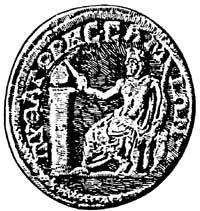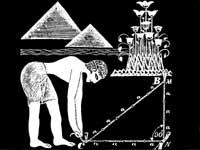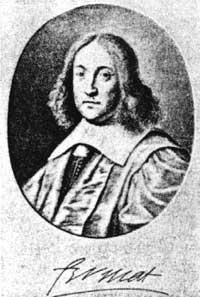The most famous edge note
The best known result attributed to Pythagoras or his school is the formula that links straight triangles to hypotenus, the well-known Pythagorean Theorem: “the sum of squares chained in straight triangles is equal to the square of hypotenuse”. The Egyptian and Babylonian results knew him and used him long ago.
But while they used it to solve particular problems (that is, they only knew that in some cases it was fulfilled), the Greeks established that equality was useful for all cases. Pythagoras was long in Phoenicia and Egypt. It would not be surprising, therefore, to learn from the Babylonian and Egyptian theorems. For example, the Egyptians used a string divided into 12 equal parts to form right angles. The triangle with sides of 3, 4 and 5 was straight.
Algebraikoki can be written as, if x, and are chained and z hypotenus,
x2 + y2 = z2
You can find infinite values of the numbers x, y, z that meet this equality. In other words, you can build infinite straight triangle.

BC. VI. From the 19th century to the 20th century. We will go from 100 to 400 years. At that time, in Greece, Diofanto lived (We still do not know the year in which he lived. The only fact we know is that he lived 84 years, as can be deduced from his death). Diofanto’s greatest work was “Arithmetic.” So far half has arrived. In many problems Diofanto established a condition when looking for solutions: solutions must be natural numbers (neither fractions nor decimals). Currently, the analysis that seeks common solutions is called diophantine and occupies a wide field of numerical theory. A diophantine solution for higher equality is used by the Egyptians:
32 + 42 = 52
In reality, the trios that fulfill the Pythagorean equation are infinite:
x = m . n, y = m2 - n2/2, z = m2 + n2/2,
s/n being (m,n) = 1.
A version of the Arithmetic of Diofanto, the adaptation of Greek to Latin by Bachet Mèziriac, came into the hands of lawyer Pierre Fermat in the seventeenth century. P. Fermat was born near Toulouse in 1601. Despite being a lawyer, he was fond of mathematics and devoted a lot of time to mathematics, whose contributions were masterful.
Diofanto's work was not practical for applied mathematicians and was excessively algorithmic for speculators. However, Fermat was able to attract and became the creator of modern numerical theory. The different forms of the theme captivated Fermat by full numbers and friends, imaginary numbers, magic squares, Pythagorean trios, theories of divisibility and especially prime numbers.

Fermat, like many readers, was customary to write notes on the edges of books. At those extremes he left many theorems written, some demonstrated and others without proof. Then all theorems or less one have been tested or denied. VIII of Diophanto. along with the problem, in which normal solutions of Pythagorean equation were requested, Fermat wrote approximately: “On the contrary, a cube cannot be divided into two cubes, the 4th reverse in two thirds and, in general, any reformed of more than two in two greens of the same degree. I discovered a surprising demonstration of this general theorem, but it does not go into this edge.”
In other words, Fermat's last theorem says that when n is greater than 2,
Recent searches
The equation has no normal solution.
For n = 3, you can perform the geometric figure of the problem. Form a cube with cubic units, another cube with other cubic units. If with the cubic units that form these two cubes you try to form a bigger cube, you will not get it.
That is what the theorem tells us. If it is called the last theorem, it is not because it was the last done by Fermat, but because it is the last one that remains unproven in those he did. In 1908 Dr. Walfskehel offered a 100,000 mark prize for those who demonstrated the theorem. The validity of the prize will end in 2007.

Fermat's theorem is shown for many n values, but not for all. However, the results known so far suggest that Fermat's claim is true, mainly due to the new results and methods obtained by the German mathematician Faltings in 1984. Fouls for each n greater than 2
Recent searches
He showed that the number of x, y, z triples that fulfill equality was finite.
The efforts made to solve this problem have led to larger and more important mathematical developments than those made in ancient times to solve the three classical problems. In many cases, unanticipated results have been satisfactory.
Those who have studied Ferma's life are divided into two groups: some believe that Fermat actually tested the theorem and others believe that he had no evidence or that his demonstration was not correct.





